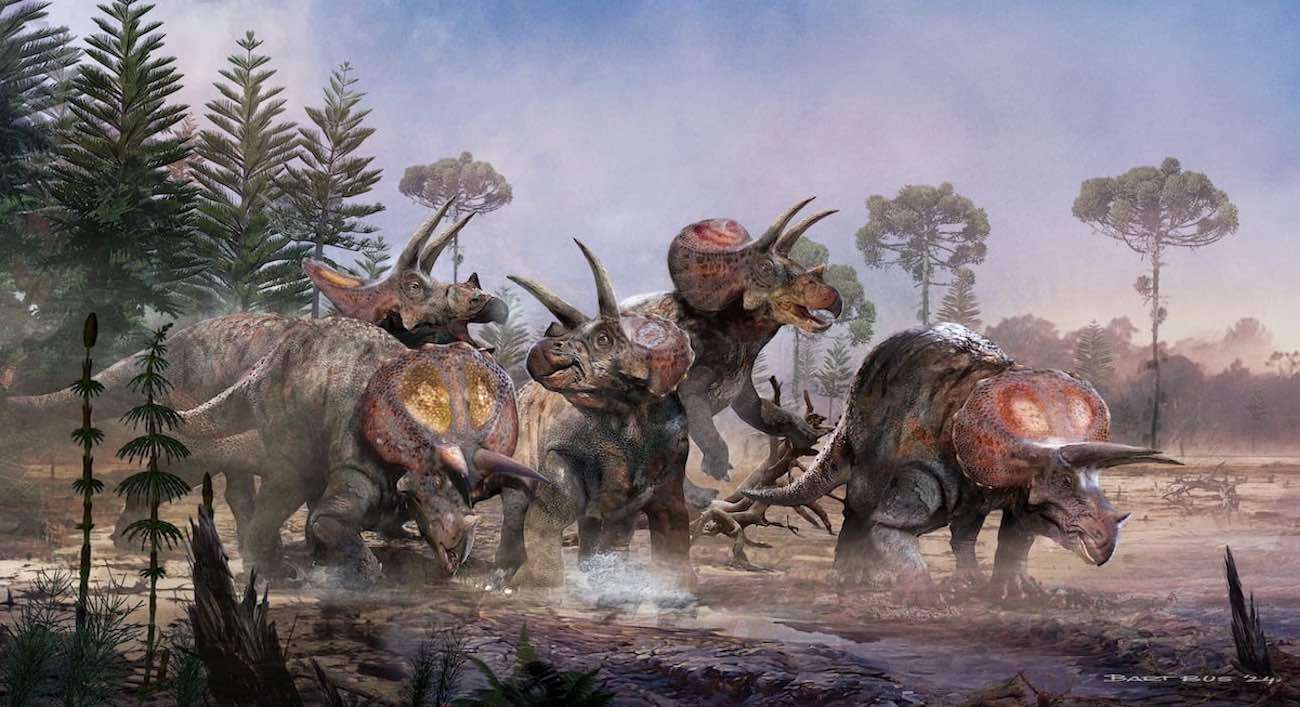Scientists Reveal Incredible Image of Magnetic Fields Spiraling from Supermassive Black Hole
This new view of the black holes Sagittarius A. and Messier 87 has shown their magnetic fields are strikingly similar.

Despite films like Jurassic Park, depicting them traveling in herds, all known fossils of Triceratops (over 50 in total) have been solitary individuals found alone (or a couple of juveniles together).
But new Dutch research just completed suggests the iconic dinosaur species did, indeed, move in herds.
A group of paleontologists from Naturalis Biodiversity Center in the Netherlands went to work in the US looking for a Tyrannosaurus, but ended up making the discovery of a lifetime—a herd of five triceratops.
The team was searching in Wyoming when they found the first Triceratops. And then, they found another one. And another one. And more.
The dig turned into a project that would last for more than ten years—and eventually uncover 1,200 bones and fragments of at least five individuals.
15 years ago, the best guess from scientists was that traveling together "wasn't something they did full time."
But the material unearthed in Wyoming was of "very good quality," according to Dr. Jimmy de Rooij who just published the study as his doctorate at Utrecht University.
"Research into the physical and chemical properties of the hundreds of triceratops teeth tells of a migratory existence—one that was the same for all five of the dinosaurs."

A team of professional and volunteer paleontologists and technicians spent years removing the remains from the quarry.
"The details of the bone bed indicate that the five dinosaurs died together, possibly mired in a swamp," said the doctoral student. "They are in a thin layer of rock, without bones of other species."
"This enabled us to show that these triceratops grew really slowly.
"This species of dinosaur teamed up, at least occasionally, and that leads to all kinds of new questions (like) ‘How complex was this social behavior, exactly?'"
Professor Anne Schulp, de Rooij's supervisor, said proudly: "The national natural history museum of the Netherlands now has the biggest triceratops find in the world."
De Rooij's work didn't just result in a dissertation, but also an entire exhibition surrounding his research of the herd. A national exhibit will kick off for free this summer in five cities around the Netherlands, and at the Naturalis museum in October.
"The five triceratops will be displayed as they lived and died 67 million years ago: together."
HATCH SOME AWE By Sharing This With Your Herd on Social Media…
Be the first to comment